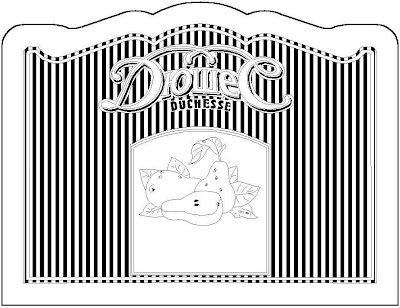ZAO Gruppa Predpriyatij Ost v. Vosk International Co. is a very long decision with very little meat. Sixty-eight pages, of which the first 34 are evidentiary rulings suitable for the final exam for any evidence course.
Applicant Vosk International Co. had an agreement with opposer and manufacturer ZAO Ost Aqua to import ZAO Ost Aqua’s non-alcoholic beverages. Shortly after the original agreement was executed, Vosk applied for the registration of three marks (here, here and here), which ZAO Ost Aqua and its parent company opposed.
The Board approached it as any ordinary likelihood of confusion case, cleanly done because the opposer had the luxury of being able to prove prior use by its earlier distribution through another company. (Often in the manufacturer-distributor situation the manufacturer’s only use is through the distributor, a much stickier situation.) Although there were some differences between the marks as originally used by ZAO and those filed by Vosk (one example below):
 |
|
| Opposer’s drawing (application later abandoned) |
 |
| Applicant’s drawing |
So although it was decided as an ordinary likelihood of confusion case, as if the two parties were legal strangers, the Board did touch on manufacturer-distributor law. A review of the legal standard:
The law is clear on the question of ownership as between a foreign manufacturer and a domestic distributor or importer:
Audioson Vertriebs-GmbH v. Kirksaeter Audiosonics, Inc., 196 USPQ 453, 456-7 (TTAB 1977) (citations omitted). |
| Under the rule in Audioson, applicant’s purchase of the goods gives it no right to register the marks, and the presumption of ownership remains with the manufacturer. Although Audioson speaks primarily of the rights of manufacturers vis-à-vis those of “distributors,” it is quite clear that the principle enunciated is not limited to manufacturer relationships with formal distributors – that would make no sense given the reasoning of the presumption, which is grounded in treaty and need to protect foreign manufacturers against the registration of their marks in other countries. |
There was also a collateral attack on the legality of ZAO’s prior use of the mark, claiming that the use was illegal because one shipment through ZAO’s original distributor used coloring that was not approved by the FDA and had been seized. The case runs down the illegality defense, a good reference next time you’re thinking of asserting it.
ZAO Gruppa Predpriyatij Ost and ZAO Ost Aqua v. Vost Int’l Co., Opp. Nos. 91168423, 91169098 and 91169446 (TTAB Aug. 9, 2011).
*Hat tip to John Welch at the TTABlog for the case and for stealing (and changing!) his “WYH*” tags.

The text of this work is licensed under a Creative Commons Attribution-No Derivative Works 3.0 United States License.
